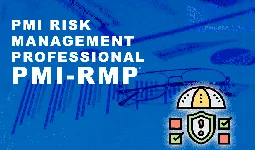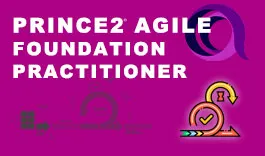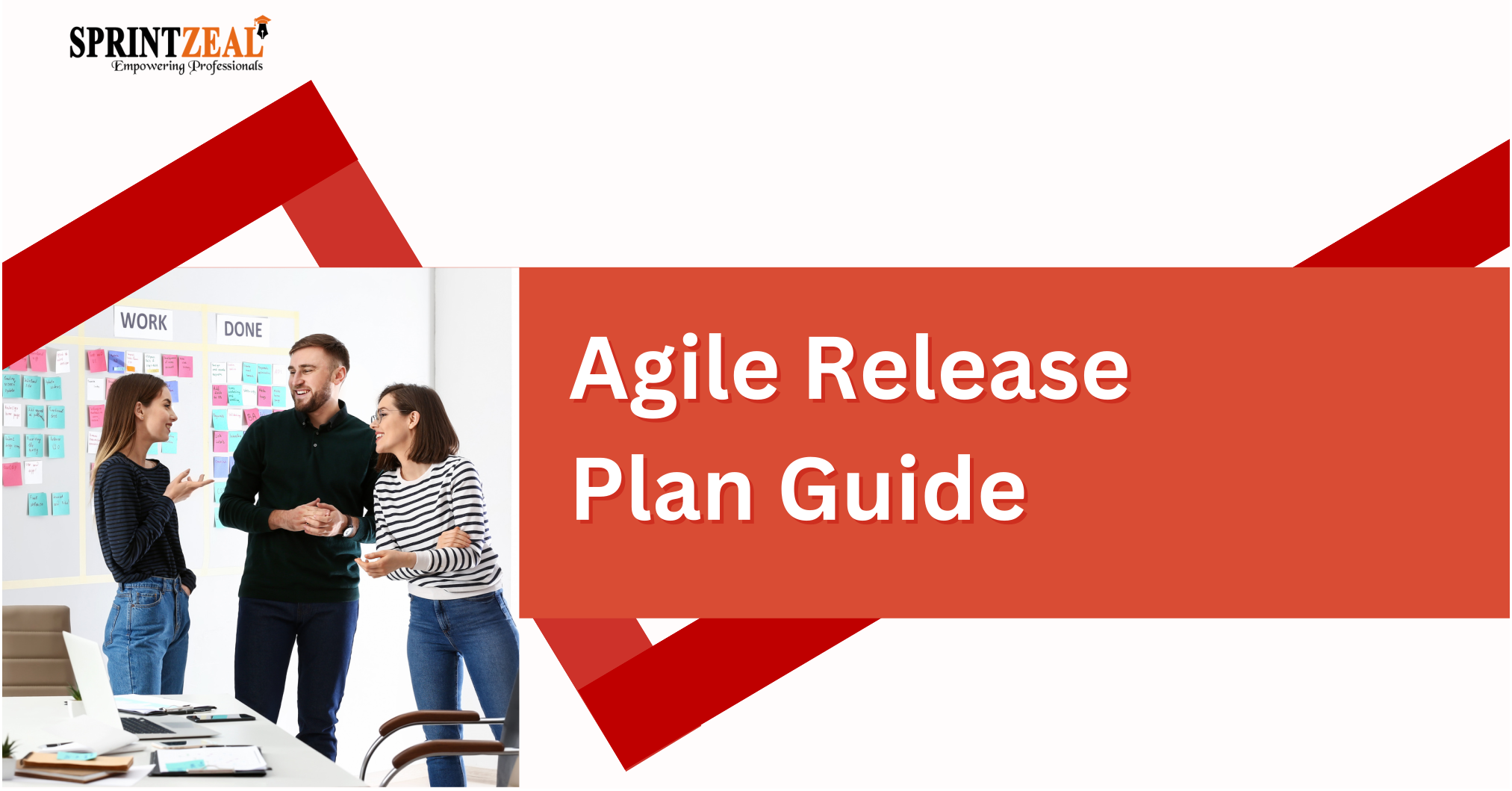Agile Methodology Explained in Detail
-
 By Nandini
By Nandini - Published on Feb 14 2023

Table of Contents
- Agile Methodology - Value, Principles, and Benefits
- Agile Methodology and Waterfall Method
- Brief Summary of the Agile Manifesto
- Values of the Agile Methodology
- Principles of the Agile methodology
- Advantages of the Agile Methodology
- Agile Methodology Steps
- What are the Best Practices in the Agile methodology?
Agile Methodology - Value, Principles, and Benefits
Working in the IT industry has its own share of perks and demerits. The perks are uncountable and the demerits are actually challenges that need to be faced efficiently. The main process of IT companies is software development.
They spend hours trying to create innovative and cutting-edge software that would simplify the daily lives of people. If you work in the IT industry, you must be aware of the magnitude of tasks that get thrown at you at the spur of a moment.
Well, that’s the life of an IT professional. Software development is fun but complex and to create a software that would meet customer requirements and be profitable for the company, you need fool-proof guidelines that your organization must follow.
The IT industry is fast evolving. With the new changes, come new responsibilities. Those responsibilities must be carried out properly to ensure the longevity of your organization. Software engineers across the world are struggling with a changing environment that is unpredictable and volatile.
To sail through such environments, you would need a flexible framework. There are many frameworks used by companies around the world. Some of them, like the ITIL have been used for many years.
But, it’s not the best solution to your problems. Majority of those frameworks are not flexible. Hence, if a new problem arises, employees get stuck with how to approach the issue.
To resolve all the above problems, the Agile methodology was created. The Agile methodology definition is that it is a set of project management principles that organizations follow to deliver their products and services properly.
The Agile methodology enables the organization to create innovative solutions for problems. The customer’s requirements are always kept in mind while designing any solution. This is beneficial because in any project, the role of the customers is very important. Traditional management systems were outdated and needed a lot of modifications.
This Agile methodology was created as a response to those traditional models and served as a fresh process to organizations that needed to update themselves.
Agile Methodology and Waterfall Method
In the earlier days, software development was in its initial stages. A lot of companies were struggling with how to create software that would meet consumer requirements and be an effective solution to the rising IT problems. The issue was that the frameworks followed at that time were not flexible enough to handle challenges or curveballs. When newer challenges threatened to cripple the structure of companies, they started thinking of innovative solutions to deal with the problem.
The earlier method followed by organizations was known as the waterfall method. In the waterfall method, ideas moved in one dimension and in a singular path. They followed a sequential approach which meant that the final process was explored at the last.
This method was not feasible and led to the losses faced by many companies. When the project teams waited for a long time to reach the final step, many critical problems arose that couldn’t be solved immediately.
The waterfall method was not flexible and thus, when organizations were faced with challenges, they had no solution for it. As a result of the waterfall methodology, many companies were shut down in the 1990s. The economic breakdown forced many corporate and software giants to come together and create an innovative solution for all these problems.
An effective solution came in the form of the Agile methodology. The agile methodology was quick, flexible, and easy to implement. The agile methodology advantages were in plenty as compared to the waterfall methodology.
This method was instantly approved and applied by many organizations across the world. The agile methodology basics were applied to software project development processes. Unique solutions to modern-day problems were the manifesto of the Agile methodology. Its concepts and characteristics were implemented to make sure that projects don’t fail.
As a result of this new methodology, many companies that were on the brink of collapse got a new lease of life and started creating better products. The Agile methodology advocates the use of constant monitoring tools to identify defects at the initial stages.
Brief Summary of the Agile Manifesto
The agile methodology for project management was brought about with a manifesto in the beginning. With the help of the manifesto, organizations were able to control their processes and create better project management methodologies.
The agile methodology for beginners is not that difficult because it follows an easy to understand the process. These processes are further emphasized by the manifesto. The manifesto of the Agile methodology is explained below.
How is Scrum related to Agile Manifesto?
There are 12 principles of the Agile manifesto that every software development team must take into account. There are also certain values of the Agile methodology that must be taken into account while understanding the Agile methodology. Let’s take a look at some of the values first.
Values of the Agile Methodology
1) The agile methodology advocates the use of working and practical software and shuns the use of texts or documents that look good only on the paper. Being practical is one of the main values of the Agile methodology as it allows individuals to focus on the workable aspects of the methodology.
2) Preferring individuals to processes. This is an important value. Often, companies undermine the importance of the human resources and only focus on the machinery and tools to decide things. This is a wrong approach as the greatest asset of any company is its manpower or human resource. When you consider human feedback as the biggest source of your adaptive changes, you will be able to adapt to problems quickly. Often machines miss out on key things that are only visible to a human eye. Therefore, considering the role of humans in a project management team is very crucial.
3) Customers are the key drivers of the organization. An organization’s profits and losses depend on how well its products are received by the people. A product that is popular with the consumers will be more successful than the one that is less popular. The Agile methodology focuses on this aspect of the project management and ensures that companies get the best out of their resources.
4) Be ready for changes and act fast in hard challenges. Be it at the office or home, there are always some guidelines or the other. These guidelines need to be flexible so that when new challenges emerge, organizations can deal with them quickly. The Agile methodology focuses on responding quickly to a change in plans. The traditional waterfall method left little scope for improvement. But, the Agile methodology is flexible and leaves wide room for improvement processes. This is the reason why a lot of companies are adopting the Agile methodology for their business processes.
Become Agile Certified Practitioner with PMI ACP Certification Training
Principles of the Agile methodology
The Agile methodology documentation and design follows certain principles that will help an organization implement the agile methodology into their development processes.
- Always focus on feedbacks given by your project management team and scrutinize each and every step carefully. Responding to feedback also forms on of the most important values of the agile methodology. If you don’t pay heed to the feedbacks received from your teammates, you will not be able to analyze the process of software development properly.
- Develop a practically working plan and not something that looks good on text. Practicality is preferred over the regular documentation processes. This must not be misunderstood. The Agile methodology has certain documentation processes that need to be followed. But, the overall principle remains the same.
- Give importance to customer satisfaction and their requirements. Customers are the most important links in any organization. They are the ones who drive a company’s success. To effectively steer a project towards success, you would need to understand the requirements of the customers and work hard to take care of them.
- Don’t hesitate to change a plan if you see that it’s not going to work, or if it is really risky. Often companies hesitate to change a plan even after knowing that the project would not be successful. This is a mindset that needs to be changed. if you detect a problem even during the last stage of the manufacturing process, feel free to change it or modify it. In extreme cases, you can even abort the project entirely.
- Follow up on projects even after their completion. Continuous improvement is the key to a successful project. Most companies aim to create products that are high in quality and fulfill the requirements of the users. Providing end-user support is the responsibility of companies and they must do it properly.
- Delivering appropriate software that is defect-free is one of the main principles of the agile methodology.
- The Agile methodology aims to create a harmonious relationship between the business stakeholders and its developers. Enabling direct contact between the organization and its stakeholders will improve transparency and create a trust factor between both the teams.
- Attention to detail is an important principle of the Agile methodology. You must keep in mind that all the technical designs are done with accurate detailing. It would ensure that the product is perfect in its design.
- Motivating project teams is also one of the most-applied principles of the Agile methodology. Motivating people would fill them with positivity and make sure that they perform better.
- Continuous improvisations must be done to ensure that the product being created is in accordance with all the principles.
Suggested Read - Agile Methodology Explained
Advantages of the Agile Methodology
The Agile methodology is really beneficial to companies. Here is a list of why the Agile methodology is so popularly implemented across businesses globally.

1) Ease of management.
Longer and a lengthier project will take time to understand and make sense of. You can break up the project into micro-projects which will ease the entire process. The team members can be assigned different roles, each concerning a particular step of the project. Because of this breaking down, you will be able to manage the project effectively.
2) Enhanced Productivity.
The agile methodology allows you to focus on each micro-step of the project, thereby breaking up your goals into smaller ones. You always keep the end result in mind and plan your objectives accordingly. This step-by-step approach is highly beneficial and will result in increased productivity.
3) Detailed and real-time information about progress.
The agile methodology ensures that a project is constantly monitored at each and every step. This is done to make sure that any error can be eliminated at the initial stage itself so that it won’t become a larger issue and result in loss. You will get accurate data on the progress of your project which will help you make key decisions.
Read - Guide to Becoming Certified Scrum Master
4) Equal power distribution.
Each member of your team will get an equal say in the project and any political tactics are strictly discouraged. Equal participation by all, including stakeholders and managing members, will make sure that everyone is satisfied with the progress. This will lead to better working environment and will have a positive effect on the project.
5) Better product delivery.
With the agile methodology, the main objective of your project will be efficient product delivery. The agile methodology is purely product-driven and hence, in every step, you will only focus on designing and creating a perfect product for your customers.
6) Increased quality.
Many companies do this mistake of compromising on quality to make for any loss in time or money. But with agile methodology, your sole purpose would be to maintain the quality of your product. If you realize at any point that a project is maneuvering towards loss, then you can change your objectives and improvise your plan.
7) Competitive spirit.
The agile methodology will train you to become competitive and deliver your results faster than other companies. This will make sure that you don’t lose out on a significant market share.
8) Minimized Risk.
You probably know how risky business projects are. There’s a nearly 70% chance of a project failing right in the initial stages. With agile methodology, you can identify risks at the beginning of the project and thus can take decisions to reduce those risks.
9) Adapt quickly to changes.
This is a thing which many companies fail to do. The agile methodology will make you efficient enough to quickly react to changes and problems. If you identify any problem in the later stages, you will be equipped with enough knowledge to decide whether you can improve the situation or altogether abandon the project for good.
10) Better follow-ups.
Following up after a project is finished is really crucial because it will decide the relations which you will build up with your clients. A better follow up will make your clients and customers happy and make them stay with your organization.
Agile Methodology Steps
The agile methodology project management is innovative and makes use of advanced project managing systems to deliver an effective framework that is in accordance with the latest theories and principles of project management.
There are a lot of steps involved in the Agile methodology process. These steps are also known as the stages of the Agile methodology. The Agile methodology cycle consists of some important steps that must be taken into consideration.
Those steps consist of certain deliverables known as the agile methodology deliverables that are used to monitor the process of product manufacturing.
1) Creating a vision for better product manufacturing.
This emphasizes on creating outlines of the vision of the product and takes care of the goals.
2) Building a roadmap for effective monitoring of requirements.
The roadmap of the product takes in to account the requirements of the manufacturing process. It is crucial if you want to understand the needs of customers as well as your organization.
3) Completing your project by removing backlogs.
A product backlog here means all the things that you have to do for the project. Backlogs can also mean the things that will lead to the failure of a project if not addressed properly.
4) Releasing the product.
This is a plan that needs to be followed for the release of a product. Effective planning will make sure that all the procedure is properly followed and that the product has been built according to the guidelines.
5) Fulfilling user requirements.
The sprint backlog in a business project considers the requirements and goals that are an essential part of the product manufacturing procedure.
6) Benefits for everyone.
While designing a product, maximum efforts should be given to the benefits of all the parties involved.
These were the deliverables or steps of the Agile methodology that are followed to deliver the product without any worries.
Agile Framework
The Agile framework is a flexible framework and consists of many sub-methodologies. The different sub-methodologies used in the Agile framework are helpful for catering to the different needs of the organization. They follow common principles that are the same throughout the different practices and aim for uniform Agile methodology design.
The two most popular methodologies of the Agile framework are Scrum and Kanban.
1) The Agile Scrum Methodology
Scrum is a form of the Agile methodology that enables enterprises to create innovative models for business projects. The main objective of the Scrum framework is to make the process of carrying out a project more flexible.
This is done in order to ensure that organizations will be able to adapt to changes. This quick adaptation to changes forms one of the main principles of the Agile Scrum methodology. Flexibility in work methods and an overall zeal to improve makes the organizations adept to face any challenges.
To effectively apply the Scrum framework into their business projects, companies require a highly skilled professional who is thorough with the Scrum methodologies and can apply the principles of Scrum in real life. Such a professional is known as a Scrum master.
In simple words, Scrum breaks up a project into minor tasks known as ‘sprints’. These sprints are a set of micro-projects that focus on one goal each. The goal could be anything, from cost-effectiveness to quality of the product. In a an unstable environment, the Scrum methodologies are helpful because they create better products and increase productivity.
The Scrum Master oversees all the project works and guides the team towards success.
What are the roles of Scrum?
There are different roles of an individual in the scrum framework. Let’s take a look at what the Scrum framework holds for different individuals.
- A product owner is directly related to the customer and represents the stakeholders.
- The people who develop and design the product are known as the development team.
- The scrum master is the highest level of Agile scrum framework and follows a set of principles that must be applied into the project management.
Read this to know which scrum certification is right for you - CSM vs CSPO certification
Here's why you should get scrum master certification
What are the different events followed in the Scrum framework?
There are certain events that take place in the Scrum framework. Let’s take a look at the different events that might be taking place in the Scrum framework. These events are also known as agile methodology artifacts.
- Sprint is a short term goal that needs to be accomplished. It is a consistent process and focuses on all around development.
- A planning or sprint planning is where the short term goals are defined and processed.
- Daily scrum is a grouping or meeting held frequently to confer the goals and requirements.
- A retrospective discussion is done regarding the progress of the previous meets. It aims to improve the processes of the next meets.
Sprintzeal offers popular scrum certification training programs like,
CSPO Certified Scrum Product Owner Certification
CSM Certified Scrum Master Training
1) Kanban methodology
Kanban is a new methodology of the Agile framework. It aims to implement visual skills into the framework to identify any visible defects in the process. It focuses on eliminating defects caused early in the process and must be identified properly.
There are general practices or agile methodology basics that must be followed in the Kanban methodology. They are as follows.
- Creating visual inputs.
If you visualize a goal you will be able to plan properly and keep in mind the goals that need to be achieved.
- Minimizing work.
Limiting or controlling the ongoing work progress to focus only on important areas will help you to achieve your goals.
- Maintaining the sequence of processes.
Managing the flow of work can allow individuals to understand where a defect might be arising.
- Creating policies.
Designing and implementing efficient policies will help organizations progress in their work.
- Relying on feedback.
Ignoring feedback is the worst thing that a company can do. Taking care of the feedback and using it to improve your processes will be beneficial to your organization.
- Evolution of ideas.
Ideas need to evolve constantly and improve continuously to make a process free from defects.
Kanban uses certain visual tools to achieve the work targets. Let’s look at some of the visual tools that Kanban uses.
- The use of traditional boards like whiteboards or sticky notes can help you to outline the goals and objectives of the process. It is a purely physical tool and takes the help of human inputs to organize the work processes. This is not only limited to professional use. It can also be used for personal use.
- Cards are relatively new to the Kanban framework. Cards can help you stay focused because they contain little information that can be viewed and processed easily. Deadlines and targets can be written down on cards to access them easily.
- Kanban flowcharts are a streamlined flow of ideas. They are usually linear and provide a better output for all the problems. The flowchart has different levels for different ideas. You can use the flowcharts to derive at particular information.
1) Agile Extreme Programming.
The Agile extreme programming is also known as Agile XP. The sole aim of the extreme programming is to produce better quality of processes through best practices. Those best practices incorporate all the principles of the Agile framework for the effective delivery of products.
2) Agile Crystal.
Crystal is a cluster of agile methodologies. It has 3 levels of guidelines that are named as Crystal clear, yellow, and orange. The main aim of the agile crystal methodology is to focus on teamwork and communication. Following an uniform set of policies and practices is the key to utilize the agile crystal methodology with ease.
3) Agile DSDM – Dynamic Systems Development Method.
This is an old methodology but has been evolved in recent times to take care of the changing requirements of the customer. Rapid development and focus on timely delivery is the main goal of the DSDM Agile methodology.
Taking care of the budget is another important aspect of the DSDM methodology. Workshops and development models can be created to implement the DSDM methodology with ease.
4) Agile FDD – Feature Driven Development
This is a popular agile methodology that focuses on shortening the length of the process so that work can be carried out easily. It follows a set of best practices that are implemented by taking into account the goals and requirements of the product.
Continuous inspections form a major part of the Agile FDD framework. It also focuses on team membership and a strong team spirit. The FDD provides visible results at the end of the lifecycle.
What are the Best Practices in the Agile methodology?
The agile methodology follows a set of best practices that must be implemented to get the best out of the framework. Here are some of the best practices of the Agile methodology.
1) Involving the customers.
Customers play a key role in driving the success of a project. The customers must be given special importance because they are the ones who will decide how the product is going to perform in the market. Taking care of the customer requirements would enable you to perform effective agile methodology assessment of the project and search for effective solutions.
2) Improving the end-user experience.
Agile methodology recommends you to take care of the end-user experience. Collecting the Agile methodology experience can enable an organization to get valuable data regarding the development processes. They will also be able to modify the product according to their requirements.
3) Aiming for continuous improvement.
The agile methodology aims to allow constant improvisations in a program. Continuous improvements will allow an organization to improve and enhance their work processes. This would result in a decrease in defects.
4)Testing the finished products.
Testing should be done at each step to ensure that a project is progressing as per your plan. Continuous testing of all the stages must be carried out to figure out where a problem might be arising from.
5) Working in groups and involving the team members.
This practice aims to reduce the burden from a single person by allowing two people to work at a time. One person can make the inputs while the other will provide feedback.
The Agile methodology is one of the most widely accepted methodologies for effective project management. It emphasizes on reducing the burden of project managers by decreasing the size of each step of project management.
The methodology is flexible and allows you to make a change to an existing plan without damaging the entire framework. It is highly beneficial for both organizations and individuals and will continue to remain popular.
At Sprintzeal, we offer the best price in the industry with qualified and expert trainers. For detailed information regarding the course, materials, costs, duration, time-schedules. etc.
Popular Project Management Courses:
Subscribe to our Newsletters
Popular Programs
PSM® - Professional Scrum Master Certification
Live Virtual Training
- 4.9 (75 + Ratings)
- 45k + Learners
Trending Posts
Business Agility Guide - Importance, Benefits and Tips
Last updated on Jun 22 2023
Everything about Scrum Methodology
Last updated on Jul 29 2024
Scrum Career Path Explained
Last updated on Jul 14 2022
Data Processing - A Beginner's Guide
Last updated on Aug 18 2022
CSM vs. PSM - Which Scrum Certification is Better?
Last updated on Mar 14 2023
Agile Release Plan Guide
Last updated on May 9 2023
Categories
- Agile Management 54
- AI and Machine Learning 42
- Big Data 53
- Business Management 51
- Cloud Computing 44
- Digital Marketing 56
- Information Security 8
- IT Hardware and Networking 17
- IT Security 103
- IT Service Management 29
- Leadership and Management 1
- Microsoft Program 2
- Other 43
- Programming Language 31
- Project Management 162
- Quality Management 75
- Risk Management 8
- Workplace Skill Building 2
Trending Now
List Of Traits An Effective Agile Scrum Master Must Possess
ArticleDevOps Vs Agile Differences Explained
ArticleDevops Tools Usage, and Benefits of Development Operations & VSTS
ArticleAgile Scrum Methodology - Benefits, Framework and Activities Explained
ArticleGuide to Agile Project Management 2024
Article10 best practices for effective DevOps in 2024
ArticleGuide to Becoming a Certified Scrum Master in 2024
ArticleWhy Should You Consider Getting a Scrum Master Certification?
ArticleCSM vs CSPO: Which Certification is Right for You?
ArticleAgile Manifesto - Principles, Values and Benefits
ArticleAgile Project Management Explained
ArticleEssential Tools for Agile Project Management 2024
ArticleEverything about Scrum Methodology
ArticleScrum Workflow - A Step by Step Guide
ArticleLatest Agile Interview Questions and Answers To Look For In 2024
ArticleScrum Interview Questions and Answers 2024
ArticleTop Scrum Master Responsibilities 2024 (Updated)
ArticleProduct Life Cycle in Marketing: Essential Strategies for Product’s Success
ArticleDevOps Engineer Interview Questions - Best of 2024
ArticleDevOps Engineer - Career path, Job scope, and Certifications
ArticleBusiness Agility Guide - Importance, Benefits and Tips
ArticleScrum vs Safe – Differences Explained
ArticleCSM vs. PSM - Which Scrum Certification is Better?
ArticleSAFe Implementation Roadmap Guide
ArticleAgile Release Plan Guide
ArticleAgile Environment Guide
ArticleAgile Coaching Guide - Best Skills for Agile Coaches
ArticleAgile Principles Guide
ArticleSAFe Certifications List - Best of 2024
ArticleAgile Prioritization Techniques Explained
ArticleScrum Ceremonies Guide
ArticleProduct Owner Certifications List
ArticleScrum of Scrums Guide
ArticleWhat is DevSecOps and its Importance
ArticleData Processing - A Beginner's Guide
ArticleDevOps Career Guide 2024
ArticleStakeholder Engagement Levels Guide
ArticleScrum Master Career Path Explained
ArticleScrum Career Path Explained
ArticleTop Git Interview Questions and Answers [Updated 2024]
ArticleA guide to Agility in cloud computing
ebookProduct Roadmap: An Ultimate Guide to Successful Planning and Implementation
ArticleDMAIC Methodology - The Ultimate Guide
ArticleProduct Life Cycle Strategies: Key to Maximizing Product Efficiency
ArticleScrum Master Salary Trends in 2024
ArticleProduct Life Cycle Model: A Guide to Understanding Your Product's Success
ArticleWhat is a Product Owner - Role, Objectives and Importance Explained
ArticleSuccessful Product Strategies for Introduction Stage of Product Life Cycle
ArticleUnlocking Career Opportunities in Product Management: Your Roadmap to Success
ArticleSaturation Stage of Product Life Cycle: Complete Guide
ArticleCutting-Edge Technology of Google Cloud
ArticleHow to Write an Executive Summary for a Business Plan?
ArticleImportance of Procurement Management Software in Modern Business
Article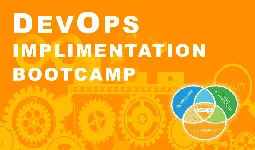
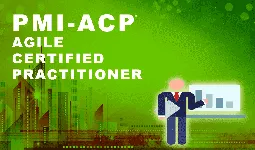

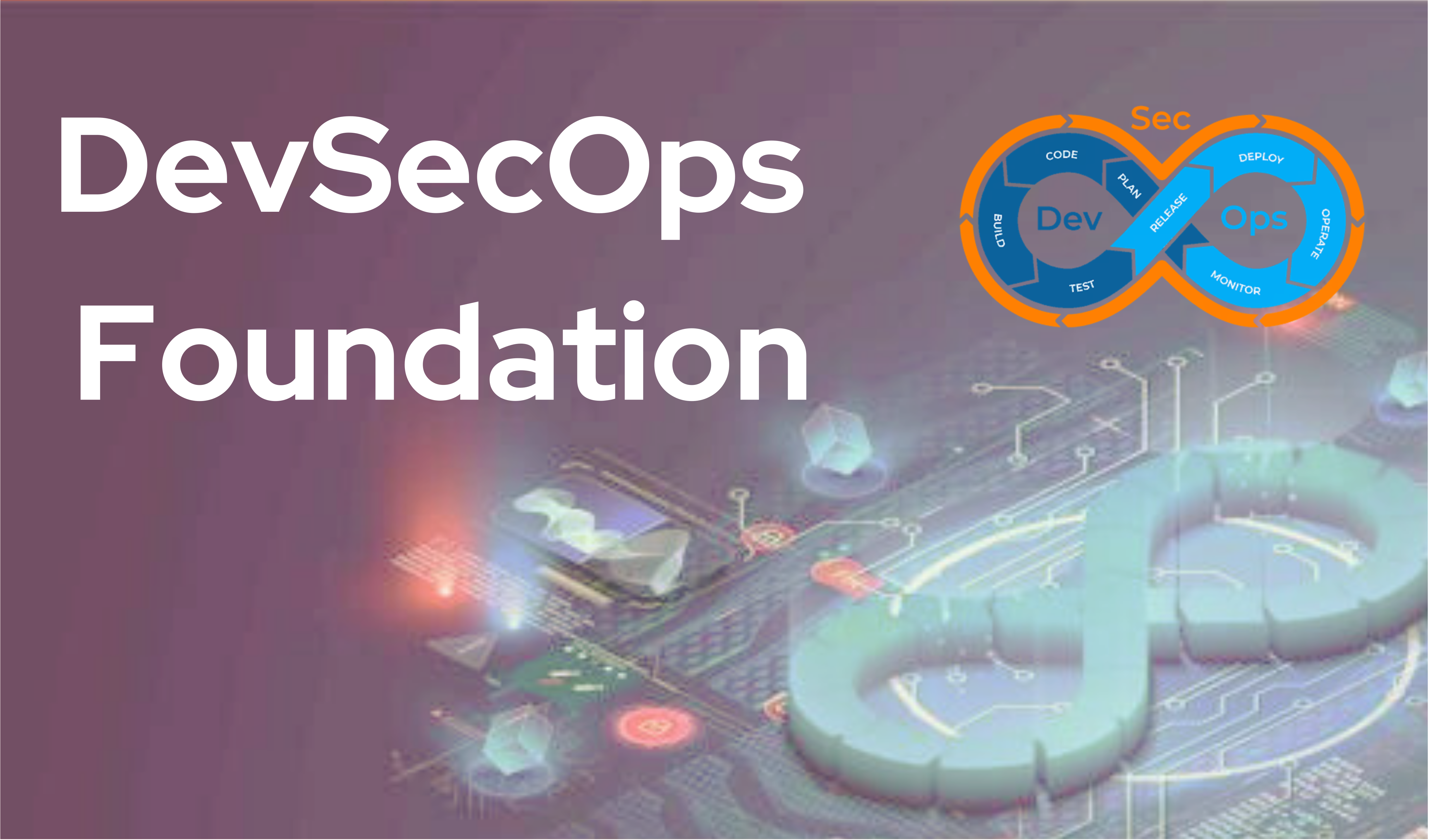

.webp)

